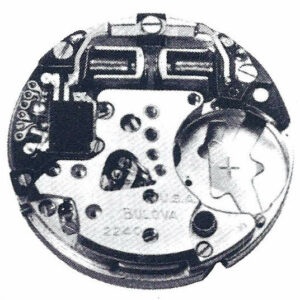 |
Brand: | Bulova | 





|
|---|---|---|---|
| Family: | |||
| Height: | |||
| Jewels: | |||
| Reserve: | hours | ||
| Frequency: | 32,768 Hz | ||
| Winding: | Battery | ||
| Diameter: | |||
| © Bulova | Complications: | Date, Day | |
| Hands: | Central Hour Hand, Central Minute Hand, Central Seconds Hand, Date Window at 3:00, Day Window at 3:00 | ||
| Distinguishing Technical Characteristics | |||||||||||
|---|---|---|---|---|---|---|---|---|---|---|---|
| Production: 1972 – | |||||||||||
| 1910s | 1920s | 1930s | 1940s | 1950s | 1960s | 1970s | 1980s | 1990s | 2000s | 2010s | 2020s |
Cal. 224 was a tuning fork movement with a quartz regulator. It can be seen as a link between the tuning fork and true quartz movements, though closer to the former than the latter. Regardless, it was the first quartz-controlled movement offered for sale in the United States and was quite successful thanks to a low price.
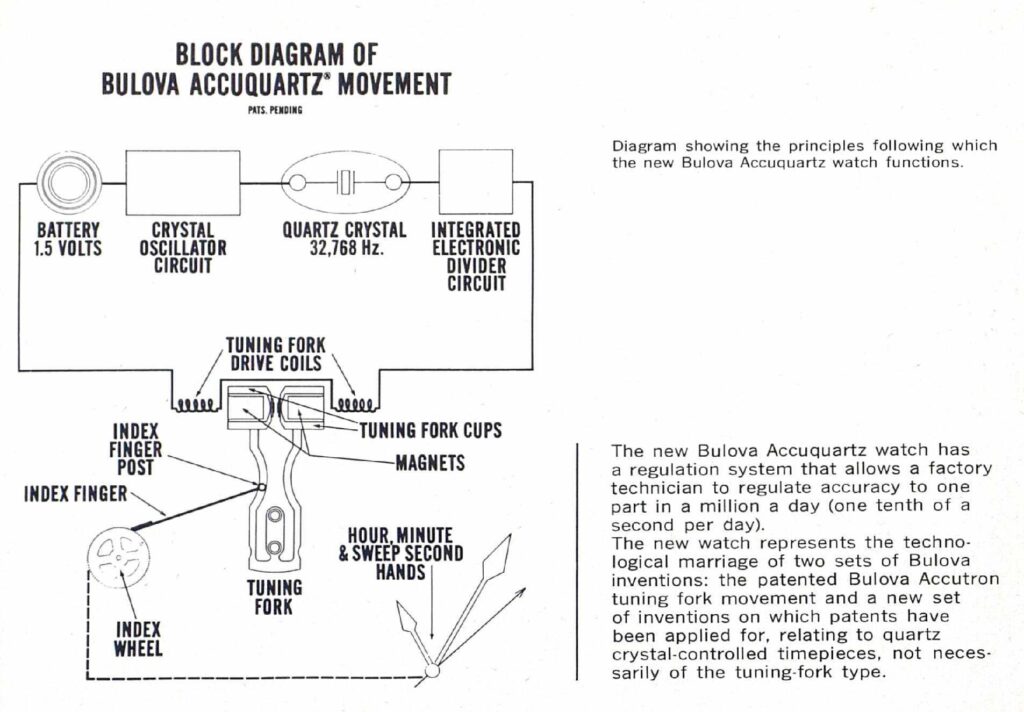
Bulova Accuquartz 224 Variants
Bulova produced three versions of the basic Accuquartz movement, using the same naming scheme as contemporary Accutron movements:
- Accuquartz 2240 – No calendar
- Accuquartz 2241 – Sweep seconds, date
- Accuquartz 2242 – Sweep seconds, day and date
Bulova Accuquartz Chronology
Bulova first used the Accuquartz name on a quartz clock released in 1969. It used a tuning fork mechanism like the historic Bulova Accutron and later Cal. 224. The first Accuquartz watch, announced on April 11, 1970, was unrelated, though there are some incidental similarities in construction. It used the Beta 21 movement and was shown at the Basel Fair in 1970 alongside an experimental digital clock of the same name. The watch featured an unusual asymmetric case with a sloping dial, allowing it to be more easily read. This model, which was little more than a prototype, was replaced by a “mini” Accuquartz in 1972.
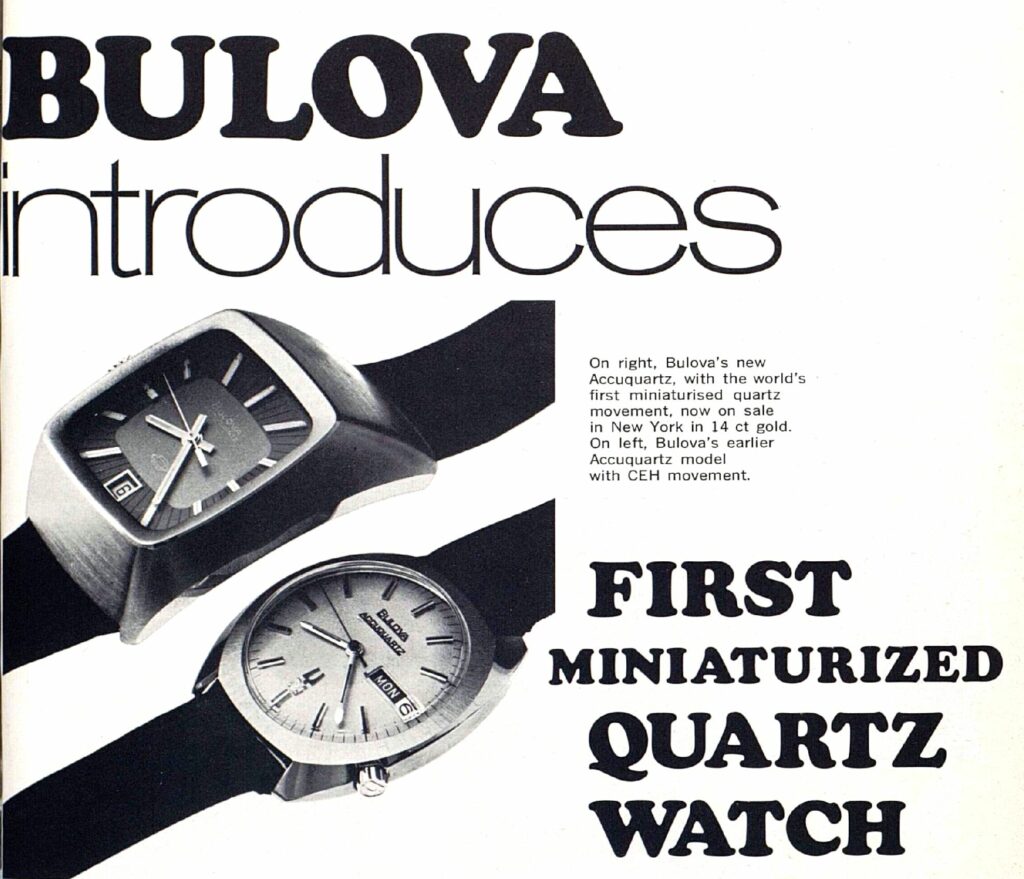
Image: Europa Star EJW 127, 1972
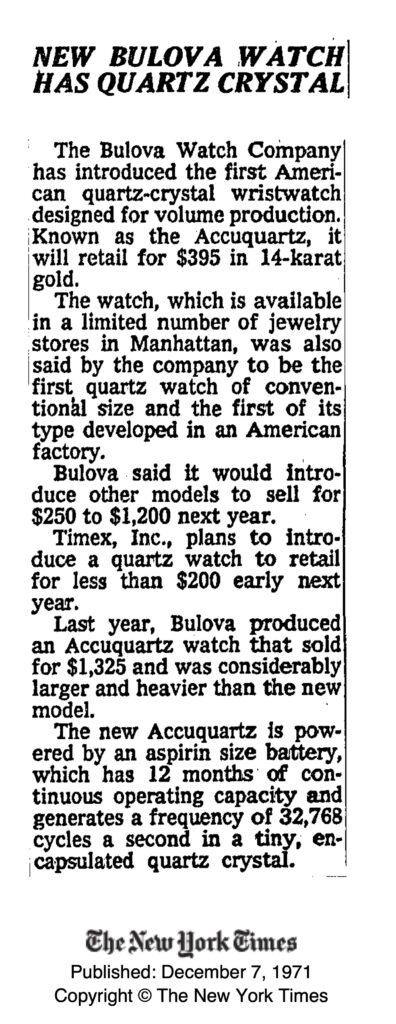
Cal. 224, used in the slim full-production Accuquartz, was closely related to the contemporary Accutron Cal. 218 tuning fork movement. It can be thought of as a tuning fork movement regulated by a 32 KHz quartz crystal or as a quartz movement that uses a conventional tuning fork and wheel train rather than a stepper motor. The Beta 21 movement, developed by the CEH consortium, used a similar mechanism to drive the hands, though with an electro-magnetic reed rather than a tuning fork.
This design of Cal. 224 allowed Bulova to mass-produce the Accuquartz movement at low cost using many shared parts and machinery. Although announced two years after the first quartz watches, the Accuquartz was the first quartz watch for sale in the United States and was a smash hit.
By November 1974, Bulova had introduced a digital version of the Accuquartz. Equipped with an LED display, Cal. 228 used a 768,432 Hz quartz crystal to keep time. A complex CMOS integrated circuit with over 1,500 transistors was used to divide this high frequency crystal and drive the light-emitting diodes. It used a four-segment display with a “dot” to indicate AM. A button at 3:00 illuminated the dial, while another at 8:00 was used to set the time.
By 1975, Bulova boasted more than 35 Accuquartz models. The company soon abandoned the name and the tuning fork, however, switching to stepper motors for their future “Accutron Quartz” branded watches.
Similarity Between Accutron 218 and Accuquartz 224
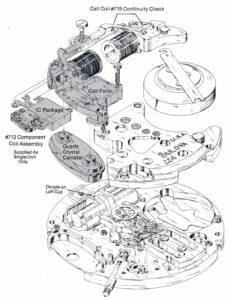
In a period Technical Bulletin, Bulova claims “the Series 224 Accuquartz is basically an Accutron Series 218 with some modifications.” This document goes on to show just how similar the movements were, with just 25 components differing. But the changes are major, including a different tuning fork, coil assembly, and train wheels.
Most of these changes were required because the tuning fork now oscillates at 341.3 Hz rather than the 360 Hz of Cal. 218. This odd rate was required due to the availability of integrated divider circuits. The crystal oscillates at 32,768 Hz, which is then divided by 32 and 3 to reach the 341 1/3 Hz of the tuning fork. This drives the wheel train through the same 320 tooth wheel as Cal. 218 but with the teeth on the 2nd wheel increased from 45 to 48 and the 3rd wheel reduced from 54 to 48. This results in a perfect sweep seconds and timekeeping hands.
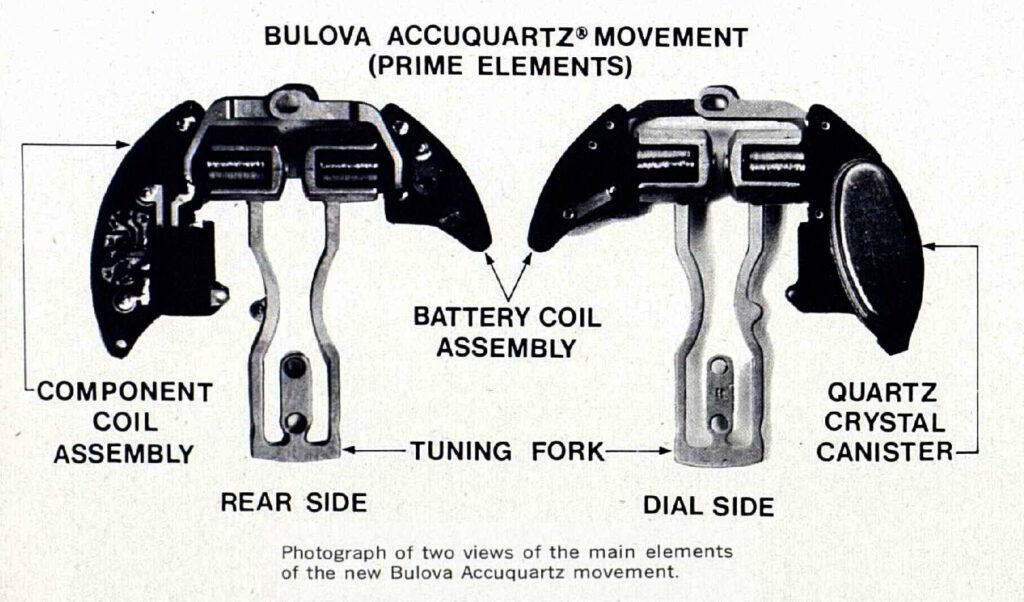
Image: Europa Star EJW 127, 1972

